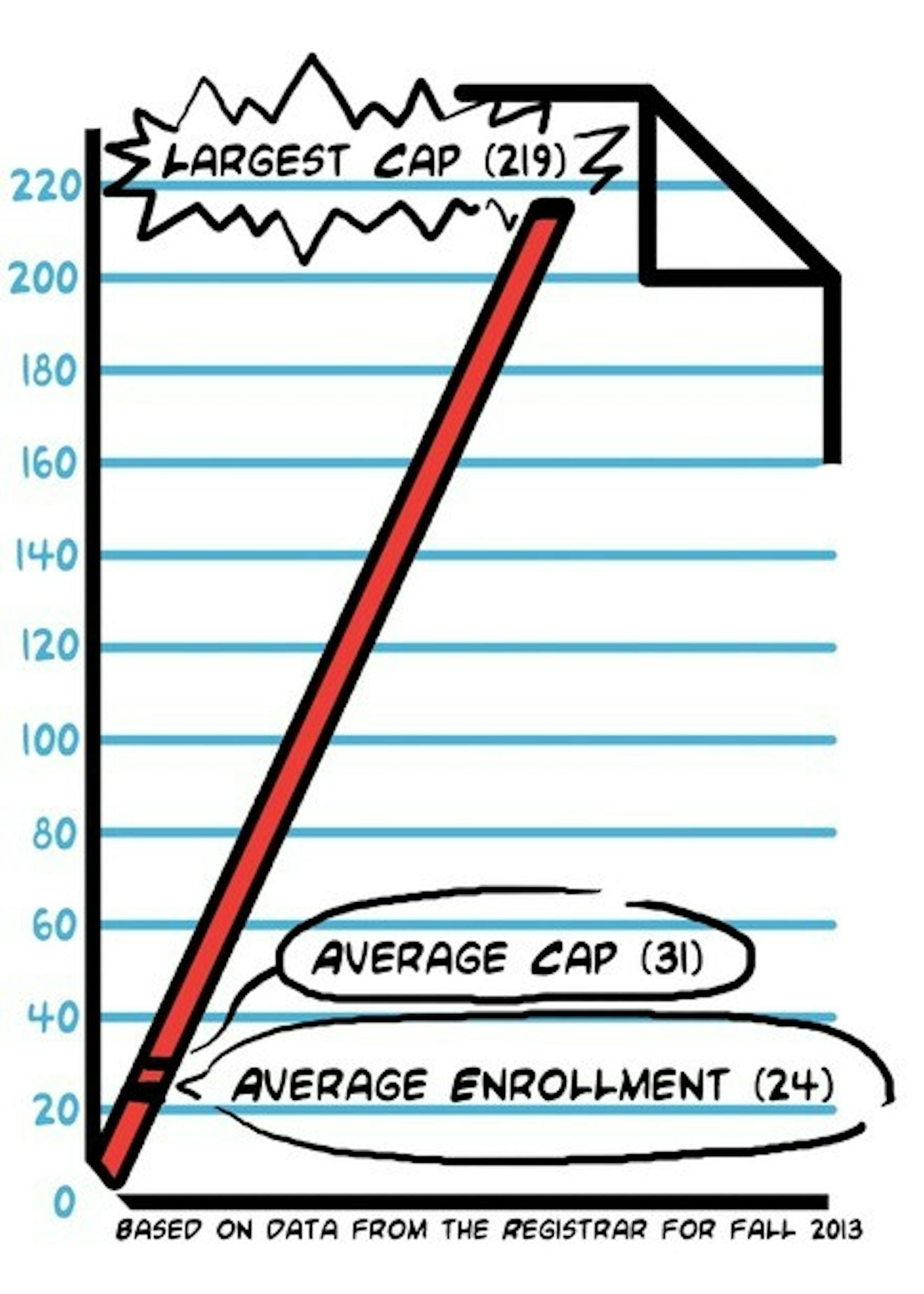Though intermittently frustrating, course enrollment limits are an integral part of the academic system. Registrar Meredith Braz said the responsibility for determining enrollment limits on courses falls to the department or program offering the course, who decide the caps on the courses offered.
Tuck School of Business professor Yaniv Dover, who teaches business courses to undergraduates, said that aiming to accommodate as many students as possible is not always the best route.
"Larger class sizes lower the quality for everyone, because they dilute the one-to-one relationship with students that I appreciate having in a course," he said. "I want to be as personal as I can when I teach."
Many students also share Dover's perspective on the drawbacks of popular courses, as the value of discussion-based courses may wane as enrollment grows.
"There's much less incentive to actively participate in larger classes," Nick Shallow '16 said. "Any debates held in large lecture courses change in character because the decrease in student contributions leads to a decrease in intellectual diversity."
Even after the term begins and add-drop period ends, enrollment limits are not set in stone. Following initial course registration, the Registrar sends reports to every department detailing the number of students selecting courses.
"This way they are aware of the demand for each course each term," Braz said.
By notifying individual departments of the shifts in course enrollments, each department and program can adjust their caps accordingly. Often, as in the case of Dover's undergraduate course, small modifications are made.
"I started with a class size of 60 and realized I could do more in the next term while maintaining the quality of service, so I moved the cap to 65," Dover said.
In the event that caps are exceeded, wait lists often begin to form. Dartmouth has no formal, ranked system for waitlists, but instead relies upon a decentralized system managed by departments and programs.
To facilitate waitlists by various academic departments, departments and programs have "bounce lists" with names of students who requested but did not gain entry to their courses.
However, the manner in which waitlists and bounce lists are utilized is subject to each department. Like most, Dover chooses to manage his on a first-come, first-serve basis as students choose to drop the class.
"The earlier you apply, the earlier you get in," he said.
Though rare, there are situations in which students with high priority designations from the Registrar may fail to gain access to a necessary course. Professors grant more students overrides to enroll at their own discretion.
"My primary consideration is how many remaining opportunities a student has to take a course," Dover said.
In the case of his "Principles of Marketing," class this fall, a waitlist of 60 people formed in addition to the two enrolled sections of 65 each.
Pale as the administrative intricacies of course election might be in comparison to the importance of KAF's new menu and College President Phil Hanlon's tie selection, it necessarily plays a vital role in preserving the quality of undergraduate education at Dartmouth. That's what we can remind ourselves of the next time we don't get into any of our classes. It's for the greater good.




